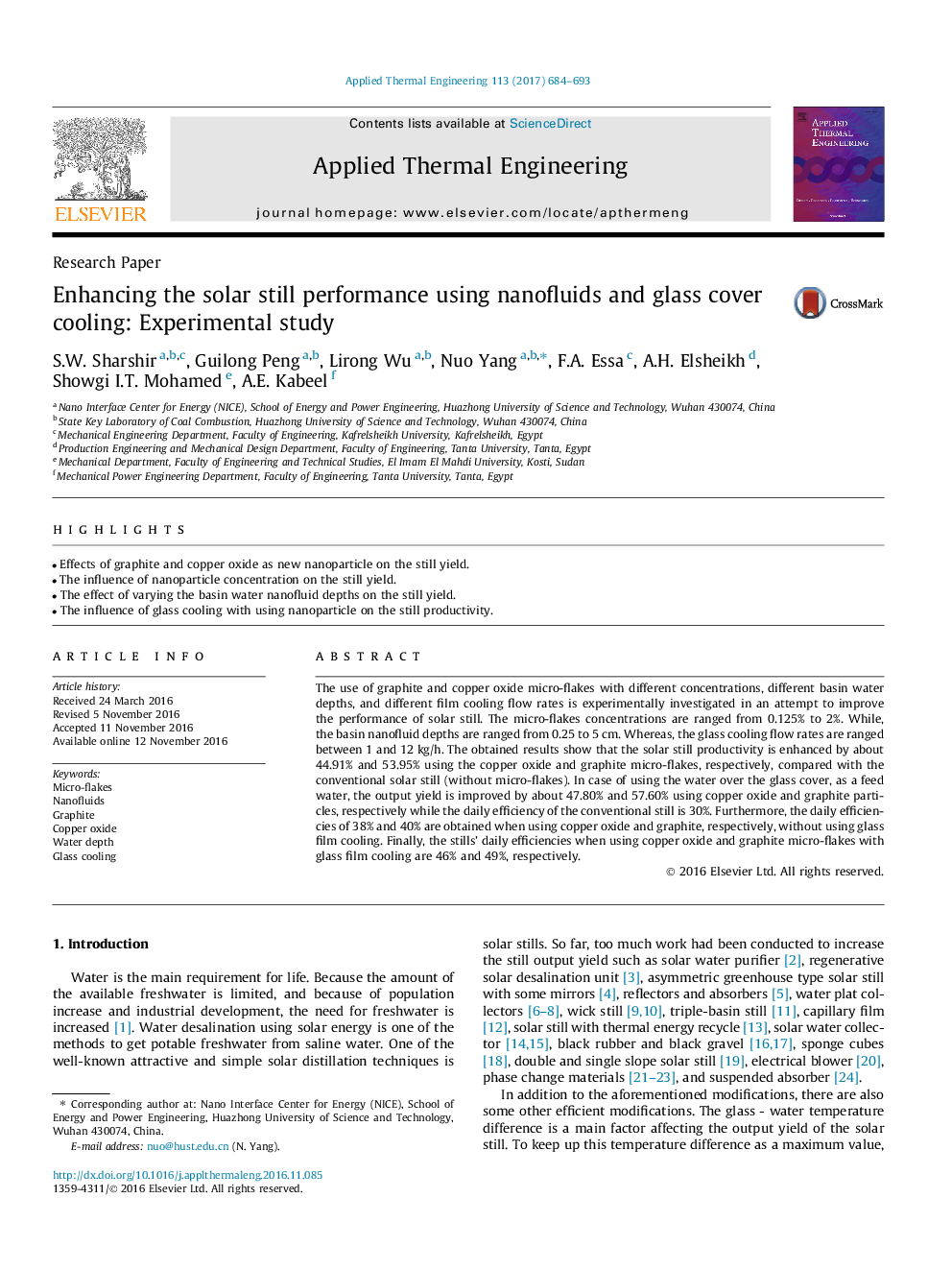| Article ID | Journal | Published Year | Pages | File Type |
|---|---|---|---|---|
| 4991842 | Applied Thermal Engineering | 2017 | 10 Pages |
Abstract
The use of graphite and copper oxide micro-flakes with different concentrations, different basin water depths, and different film cooling flow rates is experimentally investigated in an attempt to improve the performance of solar still. The micro-flakes concentrations are ranged from 0.125% to 2%. While, the basin nanofluid depths are ranged from 0.25 to 5Â cm. Whereas, the glass cooling flow rates are ranged between 1 and 12Â kg/h. The obtained results show that the solar still productivity is enhanced by about 44.91% and 53.95% using the copper oxide and graphite micro-flakes, respectively, compared with the conventional solar still (without micro-flakes). In case of using the water over the glass cover, as a feed water, the output yield is improved by about 47.80% and 57.60% using copper oxide and graphite particles, respectively while the daily efficiency of the conventional still is 30%. Furthermore, the daily efficiencies of 38% and 40% are obtained when using copper oxide and graphite, respectively, without using glass film cooling. Finally, the stills' daily efficiencies when using copper oxide and graphite micro-flakes with glass film cooling are 46% and 49%, respectively.
Related Topics
Physical Sciences and Engineering
Chemical Engineering
Fluid Flow and Transfer Processes
Authors
S.W. Sharshir, Guilong Peng, Lirong Wu, Nuo Yang, F.A. Essa, A.H. Elsheikh, Showgi I.T. Mohamed, A.E. Kabeel,
